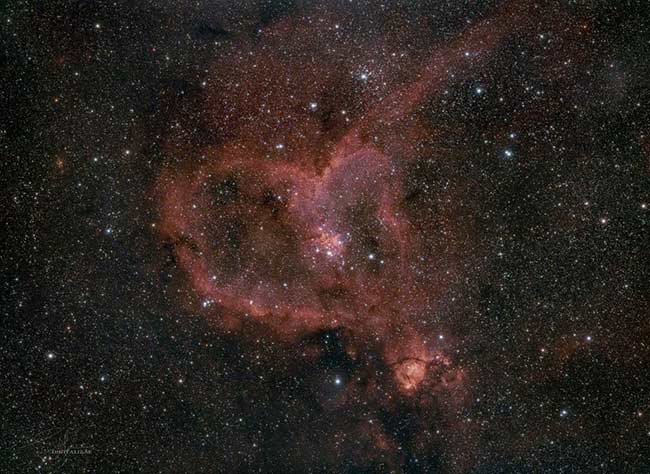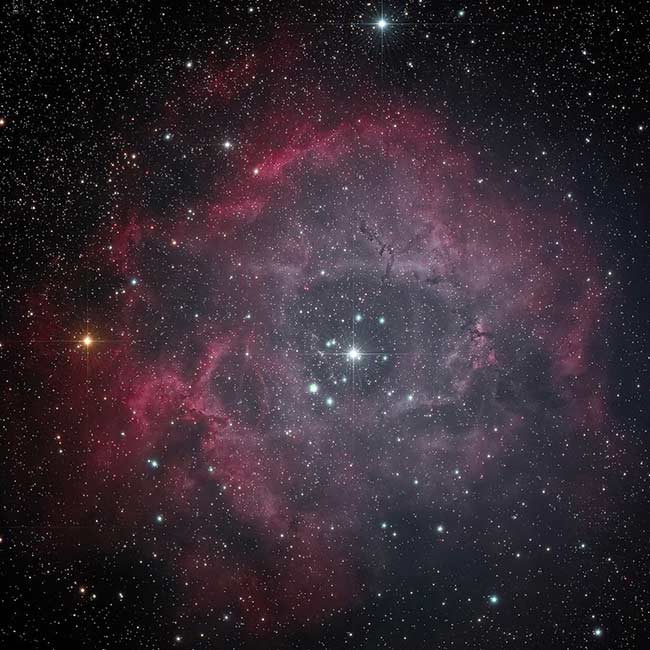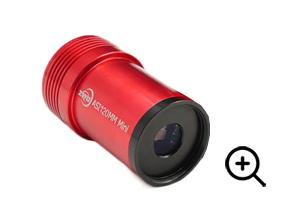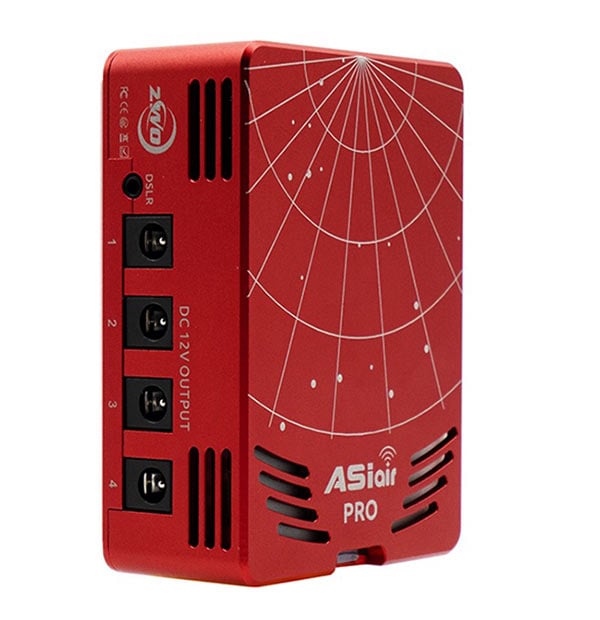Backyard of the Week | June 21, 2021
The AstroBackyard Backyard of the Week highlights astrophotography setups from around the world. A “backyard” can be a balcony, driveway, garden, or wherever else you set up astrophotography equipment at home.
By taking a behind-the-scenes look at the equipment amateur astrophotographers use to take deep-sky images, you can get a better understanding of the process.
This week’s backyard astrophotography equipment profile comes to us from Stefan Nilsson in Sweden.
Location: Åhus, Sweden
Stefan’s astrophotography rig is a breath of fresh air. In place of a telescope, Stefan uses a telephoto camera lens, and his results speak for themselves.
After seeing so many dedicated astronomy cameras and GoTo telescope mounts featured on this website, I am glad to see an affordable star tracker setup getting some attention.
I especially love that Stefan is using a Canon 400mm telephoto lens on a Sony camera body. Two powerhouse camera brands collide head-on thanks to a Sony/Canon lens adapter.
Stefan Nilsson
Stefan uses a Canon EF 400mm F/5.6L lens to capture nebulae and galaxies with his Sony A7III mirrorless camera. The focal length and f-ratio of this lens are comparable to those of a wide-field refractor telescope.
The following image is proof that incredible deep-sky astrophotography images are possible without a telescope.
The Orion Nebula and Running Man Nebula by Stefan Nilsson
This image showcases the impressive tracking performance of Stefan’s iOptron SkyGuider Pro. This image includes a stack of several sub-exposure lengths, including ones that are 5-minutes long.
To capture a photo like this using a portable kit requires attention to detail in the acquisition process. Polar alignment, balance, and achieving a sharp focus are critical.
When it comes to astrophotography, focusing a camera lens can be more difficult than a telescope. Most lenses were designed to focus quickly (autofocus), during the day.
The star tracker and lens Stefan uses.
Some people like to use tape (myself included) to hold the focus ring of the camera in place when critical focus is reached. If you’re comfortable with the lens, this process becomes even easier.
I have personally enjoyed using the SkyGuider Pro, and have also used it in harmony with the Canon EF 400mm F/5.6L lens.
A camera and telephoto lens of this size make a lot of sense on star trackers like the SkyGuider Pro and Star Adventurer.
Related Video: Use a Camera Lens for Astrophotography
Stefan’s Equipment
| Primary Camera | Sony a7 III |
| Primary Lens | Canon EF 400mm f/5.6L |
| Star Tracker | iOptron SkyGuider Pro |
| Filter | Astronomik CLS-CCD Clip-in |
| Guide Scope | 50mm Guide Scope |
| Guide Camera | ZWO ASI120mm Mini |
| Camera Control | ZWO ASIAir Pro |
What does Stefan love most about his gear?
“Easy setting up, portable and affordable”
If you follow Stefan on Instagram, you’ll see how much progress he has made in a short period of time. His progression into the world of autoguiding (and dithering) seems to have had a major impact on the types of astrophotography projects he can tackle.
Stefan has mounted a small guide camera system to the camera body and controls the ZWO ASI120MM Mini camera via the ZWO ASIAir Pro. This is an interesting configuration for anyone looking to take advantage of the autoguide port on the iOptron SkyGuider Pro.
This allows Stefan to take longer, tracked exposures of the night sky while remaining ultra-portable.
The Camera
The Sony a7 III is a 24.2MP full-frame mirrorless camera. This camera is an absolute show-stopper all around, but the dynamic range and low noise performance are what amateur astrophotographers appreciate most.
Reviews of this camera mention the impressive low-light live-view performance of the a7 III. A bright live-view screen (when using a lens with a large aperture) make focusing and framing an astrophotography target much easier.
The Sony a7 III Mirrorless Camera
This camera has had the full-spectrum modification performed on it to reveal more light in the h-alpha spectrum. Those looking to have this modification performed can hire a professional, or track down a used model on the astronomy classifieds.
Just look at this image of the Heart Nebula Stefan captured using his modified a7 III and an Astronomik CLS-CCD clip-in filter.
The Heart Nebula by Stefan Nilsson
The Lens
The Canon EF 400mm/5.6L is discontinued by Canon, but there are plenty of them available in the used marketplace. It’s a prime telephoto lens, with a built-in lens hood to block stray light and help with dew issues (just like a telescope dew shield).
L-Series lenses are all sealed against dust and moisture for challenging environmental conditions, like staying outside all night. The USM autofocus motor is handy for daytime photography but will go unused at night.
The Canon EF 400mm F/5.6L Lens
While this lens is slower than most lenses being used for astrophotography (F/5.6), it’s a practical length for deep-sky projects at 400mm. Expect to shoot at least 60-seconds or more with this lens to really start picking up any nebulae or galaxies in detail.
Canon EF 400mm F/5.6 USM Specs
- Type: Prime
- Focal Length: 400mm
- Focal Ratio: f/5.6
- Weight: 2.7 lb (1.2 kg)
Here is a fantastic example of what this lens can do in the astrophotography realm. This photo of the Rosette Nebula was created by stacking 81 x 2-minute exposures at ISO 6400 using Stefan’s rig.
The Rosette Nebula by Stefan Nilsson
The Star Tracker
The iOptron Skyguider Pro was the first star tracker I ever used for astrophotography. It’s an incredible device, capable of producing detailed images of nebulae and galaxies in a compact package.
A setup like Stefan’s is the perfect example of the type of rig the SkyGuider was meant for. The Sony a7 III, Canon telephoto lens, and small autoguiding system are well under the maximum (11 pound) payload capacity of this mount.
It looks like Stefan has upgraded the standard wedge base of this tracker to the more robust William Optics version for added stability.
Related Video: Upgrade your iOptron SkyGuider Pro with iPolar
The Filter
A clip-in filter is useful when shooting with a camera lens, because it sits inside of the camera body. The Astronomik CLS-CCD Clip-in was designed specifically to fit the Sony a7 III, and it looks to be working extremely well for Stefan’s location.
The Astronomik CLS-CCD Filter (Sony Clip-In)
When choosing a light-pollution filter for astrophotography, it is important to choose one that best suits your personal imaging conditions.
For example, a Bortle Scale Class 4 location may only require a mild broadband filter like the Optolong L-Pro (or no filter at all), while a bright city sky will benefit from something a little stronger like the CLS-CDD.
The Guide Camera
The ZWO ASI120MM Mini is the perfect choice for a small guide scope and the ZWO ASIAir Pro. Doubling as an impressive solar system camera, the ZWO ASI120mm Mini is one of the best values in the astrophotography equipment world.
When paired with a small guide scope, almost zero weight is added to your setup.
ZWO ASI120MM Mini Guide Camera
If you own the ZWO ASIair wifi camera control device, this becomes an extremely practical, affordable choice.
Camera Control Software
Once again, the ZWO ASIAir Pro makes an appearance in the Backyard of the Week. In Stefan’s case, this device allowed him to stay portable and lightweight while tapping into the power of autoguiding and dithering.
The ASIAir Pro stores the images on the onboard Micro SD card, and the image acquisition session is controlled completely from your smartphone or tablet.
Thank you for sharing your backyard astrophotography set up with us, Stefan! You can view Stefan’s astrophotography on Instagram or Facebook
This is a great way for beginners to see a deep-sky imaging setup that is being used to successfully photograph the night sky.
Be sure to fill out the form to submit your backyard for a chance to be featured, and don’t forget to include your Instagram handle to help grow your following.
View the Backyard of the Week Archives









